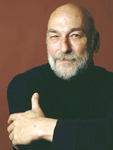Seeing the Light
LEDs are no longer just for the “ON” switch.
Every month between publication cycles, I try to reach out to designers to find out how things are going, what they working on, and of course, to find out if anybody has acquired any cool new guitars. Last week I talked to a friend (my twin brother of a different mother) many readers may know: Kelly Dack. Kelly works for IGT in Reno, NV. Not only does Kelly get to enjoy working and living in one of the most fantastic areas of the US, he and his colleagues at ITG get to work on some interesting boards. Those colorful and musical machines you see at any casino? ITG designs and builds them. If you’ve been to a casino lately, you may have noticed the flashing and pulsing lights that accompany the siren songs are changing. They are migrating to LED technology. According to Kelly, even the enticing sign that welcomes people to Reno is now lit by LEDs.
To people like me who have retired from daily board designing, LEDs were always a small part of our designs. They were employed to alert you whether the computer was on, or the car engine needed an oil change or something like that. Today, LEDs are at the heart of a dramatic change in energy conservation. They are no longer the little “ON” lights: They are the illumination for everything. Kelly and others have told me about boards chock full of LEDs. But there are issues with these boards with which more designers are going to have to contend and find answers.
From what I hear, a big issue right now is thermal management. When you put a bunch of LEDs on a single board, the heat buildup can be so significant as to cause failures. Some people are using heat sinks, bus bars and fans, of course. But going forward there will have to be better solutions. Metal core boards may be one answer, but other creative solutions are going to be required. I’ve heard that people are experimenting with cutouts in the substrate to get more direct contact with a metal core.
Another problem is one of capability and capacity on the manufacturing side. As reported by Mike Buetow, our manufacturing and business guru, only 15% to 20% of the EMS companies have production experience with metal core boards. As we all know, it does no good to design “it” if “it” can’t be manufactured at a reasonable cost and delivery. And then there is the issue of component traceability. Different LEDs have different light-emitting properties that are denoted by a “bin” code. Bin codes might be mixed on a board to get the right amount of light out. As such, assemblers have to track (scan) by serial number the LEDs on each board to ensure the end-product is to specification. They can’t simply swap one part for another, making tracking more complicated than with traditional passives.
It’s always interesting to see a new technology, or technology used in a new way. It’s one of the things that keep our jobs challenging. Expect to see more about the design and manufacture of LED boards in upcoming issues of this magazine and on our websites. In fact, for the first time, we have a class on LED board technology at PCB West (pcbwest.com) this year.
Speaking of PCB West (a somewhat transparent segue to set up a blatant plug), things are starting to heat up. As I write this, in early August, we are about seven weeks away from the annual trade show. Our VP of sales and marketing, Frances Stewart (known to some as She Who Must Be Obeyed), tells me that the show floor is just about sold out, and she is determined it will be full by the time we see you at the show. Registration is tracking ahead of this time last year, and we are looking forward to talking with a lot of people we haven’t seen in a while.
Space doesn’t allow me to list all the classes, but I do want to call your attention to a session on Wednesday called Designers’ Roundtable. This will be a somewhat free-form networking session to find out what designers are struggling with and share some ideas. We tried the Designers’ Roundtable at PCB Atlanta last year and the response was fantastic. According to designers and fabricators here in the Atlanta area, there is still a desire to have a better networking solution for designers. For whatever reason, most local Designers Council chapters haven’t met in some time. (I hear the same comments from a lot of local chapters.) I’d like to hear your comments about this at the roundtable and will be glad to share some of our thoughts as well.
In the meantime, stay in touch.
Pete Waddell is design technical editor of PCD&F; This email address is being protected from spambots. You need JavaScript enabled to view it..





